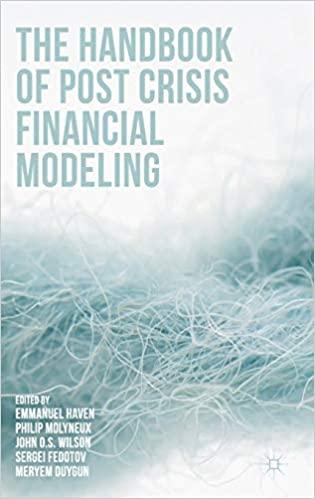Question
The following information relates to Questions 10-14 Howard Golub, CFA, is preparing to write a research report on Stellar Energy Corp. common stock. One of
The following information relates to Questions 10-14
Howard Golub, CFA, is preparing to write a research report on Stellar Energy Corp. common stock. One of the worlds largest companies, Stellar is in the business of refining and marketing oil. As part of his analysis, Golub wants to evaluate the sensitivity of the stocks returns to various economic factors. For example, a client recently asked Golub whether the price of Stellar Energy Corp. stock has tended to rise following increases in retail energy prices. Golub believes the association between the two variables is negative, but he does not know the strength of the association.
Golub directs his assistant, Jill Batten, to study the relationship between Stellar monthly common stock returns versus the previous months percentage change in the US Consumer Price Index for Energy (CPIENG) and Stellar monthly common stock returns versus the previous months percentage change in the US Producer Index for Crude Energy Materials (PPICEM). Golub want Batten to run both a correlation and a linear regression analysis. In response, Batten compiles the summary statistics shown in Exhibit 1 for the 248 months between January 1980 and August 2000. All of the data are in decimal form, where 0.01 indicates a 1% return. Batten also runs a regression analysis using Stellar monthly returns as the dependent variable and the monthly change in CPIENG as the independent variable. Exhibit 2 displays the results of this regression model.
| EXHIBIT 1 | Descriptive Statistics | |||||
| Lagged Monthly Change | ||||||
| Monthly Return Stellar Common Stock | CPIENG | PPICEM | ||||
| Mean | 0.0123 | 0.0023 | 0.0042 | |||
| Standard deviation | 0.0717 | 0.016 | 0.0534 | |||
| Covariance, Stellar vs CPIENG | -0.00017 | |||||
| Covariance, Stellar vs PPICEM | -0.00048 | |||||
| Covariance, CPIENG vs PPICEM | 0.00044 | |||||
| Correlation, Stellar vs CPIENG | -0.1452 |
| EXHIBIT 2 | Regression Analysis with CPIENG | |||||
| Regression Statistics | ||||||
| Multiple R | 0.1452 | |||||
| R2 | 0.0211 | |||||
| Standard error of the estimate | 0.0710 | |||||
| Observations | 248 | |||||
| Coefficients | Standard Error | t-Statistic | ||||
| Intercept | 0.0138 | 0.0046 | 3.0275 | |||
| Slope coefficient | -0.6486 | 0.2818 | -2.3014 | |||
| Data Type | Expected Value of Error Term | |||||
| A | Time series | 0 | ||||
| B | Time series | i | ||||
| C | Cross sectional | 0 |
11. Based on the regression, which used data in decimal form, if the CPIENG decreases by 1.0 percent, what is the expected return on Stellar common stock during the next period?
A. 0.0073 (0.73%)
B. 0.0138 (1.38%)
C. 0.0203 (2.03%)
12. Based on Battens regression model, the coefficient of determination indicates that:
A. Stellars returns explain 2.11% of the variability in CPIENG.
B. Stellars returns explain 14.52% of the variability in CPIENG
C. changes in CPIENG explain 2.11% of the variability in Stellars returns.
14. For the analysis run by Batten, which of the following is an incorrect conclusion from the regression output?
A. The estimated intercept coefficient from Battens regression is statistically significant at the 0.05 level.
B. In the month after the CPIENG declines, Stellars common stock is expected to exhibit a positive return.
C. Viewed in combination, the slope and intercept coefficients from Battens regression are not statistically significant at the 0.05 level.
Step by Step Solution
There are 3 Steps involved in it
Step: 1

Get Instant Access to Expert-Tailored Solutions
See step-by-step solutions with expert insights and AI powered tools for academic success
Step: 2

Step: 3

Ace Your Homework with AI
Get the answers you need in no time with our AI-driven, step-by-step assistance
Get Started


